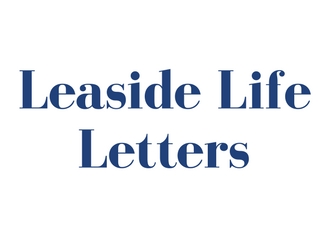Planning decisions should be made locally
According to Geoff Kettel’s article in last month’s Leaside Life, the recently established Toronto Local Appeal Body (TLAB), which now hears appeals from decisions of the Committee of Adjustment, is proving to be just as unfriendly to residents as the Ontario Municipal Board (OMB) it replaced.
While Committee of Adjustment decisions are now appealed to this new TLAB, appeals from all other planning decisions continue to be heard, for the present at least, by the OMB. However, fear not. According to Premier Kathleen Wynne, that will soon change as well. “Planning decisions have to be made locally,” she wrote to us recently. To accomplish that, the Ontario government plans to give the new TLAB the authority to hear all other planning appeals now heard by the OMB. This change, the province says, will provide a faster, fairer, more affordable and friendly process for residents who want to appeal planning decisions.
For Leasiders, “planning decisions made locally” has always meant the local community decides where higher density housing is to be built. In Leaside that used to mean Thorncliffe, which was planned from the beginning to be a high density community within Leaside. But apparently, “planning decisions made locally” doesn’t mean the same to the province as it does to Leasiders because when you or I appeal to the TLAB, no matter what we may want, our appeal will fail if it doesn’t comply with the Provincial Smart Growth Act because that’s what the legislation creating the new powers for the TLAB says.
The Smart Growth Act has been in place for almost 15 years. It requires the city of Toronto to increase housing densities. Recently, a provincial committee headed by former Toronto Mayor David Crombie recommended even greater densities for our megacity. The Toronto Official Plan (OP) is on all fours with the Smart Growth Act, and can be and often is amended to meet that required TLAB test when the Toronto planners decide that a community should have increased housing density. Because of amalgamation the Province defines “local” as meaning the city of Toronto rather than the Leaside community. This is fine if you want higher housing density in your community, but in times past, with the exception of Thorncliffe, that was the last thing Leasiders wanted elsewhere in the community.
If you live in Leaside or Bennington Heights, you should be aware of the fight waged by your neighbours to stop Cadillac Developments and Belmont Construction from replacing 46 detached homes on Mallory Crescent with three 22-storey and two 29-storey apartment buildings containing a total of 1,382 suites. Your neighbours understood that decisions made locally mean made in in your own community, not at Queen’s Park and City Hall. The new TLAB would have approved that development because the 1,382 apartment suites replacing the 46 detached homes would have conformed to the Provincial Smart Growth Act.
Alan Redway is a former MP and East York Mayor.
City must act on Bayview Quads
Midtown in Focus – what’s that? It’s a study similar to Laird in Focus but for the area west of Bayview to Avenue Rd. Because it stopped at the centre line of Bayview it wasn’t considered to be of much interest or concern to Leaside. But with the recent release of the Midtown in Focus Proposals Report, that’s changed, it’s now relevant to Leaside. That’s because Midtown in Focus (otherwise known as the Yonge Eglinton Secondary Plan) includes proposed policies that would encourage mid-rise (three to seven storeys) development, similar to the recently approved 1674 Bayview Ave. (between Hillsdale and Soudan), but on the east side of Bayview from Broadway Ave. to McRae Dr.
Here’s why it is relevant to Leaside. We think the City needs to take immediate action to list and designate the row of 10 quadraplexes at 1747-1749 to 1783-1785 Bayview. The LPOA submitted heritage nominations for these properties in 2011, and Metrolinx identified the one it owns (1783-1785 Bayview) as a “provincial heritage property” in 2015, and the heritage cred of Henry Howard Talbot projects was decided with the Talbot apartments in south Bayview in 2009. Why has the City not conducted the heritage assessment and made a decision?
Until this happens, the Midtown in Focus proposal to permit mid-rise development on the quadraplex strip on the east side of Bayview appears premature and in conflict with the provincial heritage property status on the most northern quadraplex.
The proposed policies will be the subject of public consultation beginning in January, 2018. In the meantime, planners are seeking to have the policies used to assess development proposals as they are submitted to City Planning, even before the plan goes before City Council, in time for the 2018 municipal elections.
The LPOA and residents are currently opposing a development proposal at the Toronto Local Appeal Body that would demolish and replace one of the quads (1755-1757 Bayview) with two semi-detached dwellings. The number of units would decrease from four to two – the complete opposite of the intensification policy intended by the Midtown in Focus plan – and also result in the loss of rental accommodation. Unfortunately, the LPOA is having to fighting this alone as the City has withdrawn from the TLAB case.
Geoff Kettel, with Carol Burtin Fripp, Co-President, LPOA



